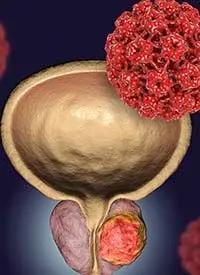Article
PSMA-derived radiomics model may help detect intraprostatic lesions on PET/CT
Author(s):
The researchers constructed the radiomics model with 9 features drawn from PET imaging of patients with or without prostate cancer.

A retrospective study published in the European Journal of Nuclear Medicine and Molecular Imaging suggests that a radiomics model may provide significantly higher sensitivity, higher specificity, and an area under the curve (AUC) that is 22% higher than that of nuclear medicine radiologists for assessment of intraprostatic lesions on positron emission tomography/computed tomography (PET/CT).1
Recognizing that small lesion size, manual analysis of PET/CT data and varying experience levels of nuclear medicine specialists may contribute to a significant number of missed intraprostatic lesions, researchers recently assessed the predictive viability of a radiomics model based upon 68Ga-PSMA-11 PET.
For their study, the researchers constructed the radiomics model with 9 features drawn from PET imaging of patients with or without prostate cancer. According to the study, the training set included 61 patients with prostate cancer and 26 patients with benign prostate disease. The study authors noted the subsequent test set was comprised of 25 patients with prostate cancer and 13 patients with benign prostate disease.
In comparison to visual assessment of PET imaging by nuclear medicine radiologists, the researchers found that the radiomics model demonstrated a higher AUC (85% vs 63%), higher specificity (77% vs 55%) and higher sensitivity (84% vs 74%) for the detection of intraprostatic lesions.
“Benign intraprostatic processes can be associated with relatively high PSMA expression levels with significant overlap between low-volume malignancies and benign disease. Moreover, visual PET interpretation might miss a significant number of intraprostatic lesions because of their small size or configuration, leading to potential false positives or false negatives,” wrote Feng Wang, M.D., who is affiliated with the Department of Nuclear Medicine at Nanjing First Hospital and Nanjing Medical University in China, and colleagues.
“In this study, the radiomics model detected (prostate cancer) based solely on a numeric feature set from high-dimensional medical imaging data, regardless of the clinical situation, which could explain its higher sensitivity compared with the readers’ assessments.”
Noting recent research that showed the benefits of radiomics features drawn from half-glandular segmentation of 68Ga-PSMA-11 PET imaging, Wang and colleagues said the use of whole-prostate gland segmentation helped to overcome the limitations of PET imaging for small prostate lesions.
“In the present study, further comparison between the radiomics model and readers revealed that high-dimensional features offered better disease characterization for (prostate cancer),” added Wang and colleagues.
In regard to study limitations, the study authors acknowledged that the small sample size and single center design may have affected the reported sensitivity and specificity rates, and limit extrapolation of the findings to broader populations. Noting that they used one PET/CT system for the study and focused on PET imaging data, Wang and colleagues suggested that future research should look at multimodal imaging data and utilize multiple PET/CT devices to ascertain the broader viability of the radiomics model.
Reference
1. Zang S, Ai S, Yang R, et al. Development and validation of 68Ga-PSMA-11 PET/CT-based radiomics model to detect primary prostate cancer. EJNMMI. 2022;12(1):63. doi: 10.1186/s13550-022-00936-5















